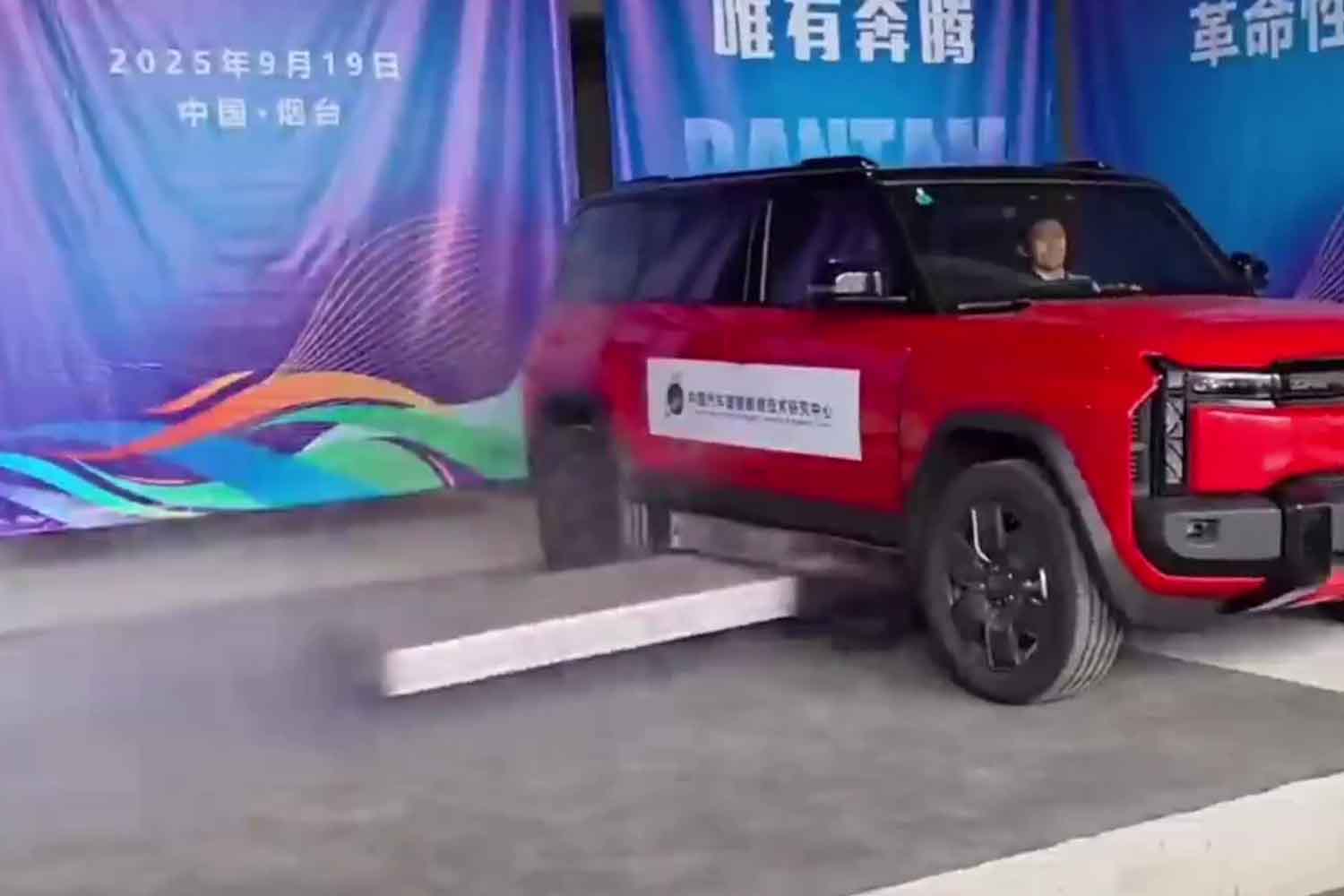A group of Chinese researchers has designed a device that allows the ejection of an electric car's battery in case of fire, reducing the risk to passengers

At the heart of every electric car lies a crucial element: the lithium battery, a block that can weigh between 660 and 1,320 pounds (300 to 600 kg). It provides the energy needed to move the vehicle and makes cleaner mobility possible. But it’s also the most vulnerable component in case of fire.
Lithium-ion batteries, when subjected to impacts, short circuits, or overheating, can experience a phenomenon called thermal runaway. Essentially, one cell overheats and transfers heat to others, creating a chain reaction that can lead to a violent fire.
Once started, this process is very difficult to stop. Even for firefighters. The battery is often embedded in the lower part of the car, difficult to reach and even harder to cool down. And the fire, in these cases, doesn’t extinguish easily even with water.
To prevent the worst, the China Automotive Technology and Research Center for Vehicle Collision Repair has developed a system capable of ejecting the burning battery away from the vehicle, even while the car is in motion. The estimated distance is between 10 and 20 feet (3 to 6 meters). The idea is simple: separate the danger from people.
The device went viral on social media after a demonstration video was posted on X (formerly Twitter). The battery can be clearly seen being launched out like a true emergency missile.
An extreme solution for a real problem, but the risk shifts elsewhere
The initiative stems from a clear intention: saving human lives and preventing catastrophic damage. But it raises important concerns, starting with a fundamental point: where does that battery end up?
A battery launched several meters away, with force and speed, can itself become a hazard. Especially in urban scenarios or heavy traffic situations. What happens if the car is in the middle of a traffic jam? If there are pedestrians, cyclists, other vehicles around?
The system isn’t yet capable of guiding or controlling the launch trajectory. It doesn’t avoid obstacles, doesn’t slow down before impact. And that’s a problem. Because even if you move the fire source away, you could create a new accident just a few meters away.
Not surprisingly, several online users and some car manufacturers expressed skepticism after the demonstration. The images are spectacular, but in reality the context is much more complicated. And a burning object weighing hundreds of pounds, launched at high speed, can cause serious damage.
An idea to improve with artificial intelligence and clear rules
It must be said: the system is still in experimental phase. The test was conducted in a protected area, equipped with a fire suppression system ready to intervene. And in that context everything worked as planned. But outside that perimeter, the unknowns increase.
To become truly effective and safe, this device needs an intelligent analysis system, perhaps based on artificial intelligence. The car should be able to recognize the surrounding environment and decide when, how and where to eject the battery safely. Not in the middle of the road, not toward another vehicle.
Another open question concerns infrastructure: parking lots, roads and highways aren’t designed to handle flying burning batteries. Rules, safe zones, protocols will be necessary. And perhaps also an update to European regulations, to establish if and how to accommodate this type of technology on our roads.
This electric car that ejects the battery in case of fire is a radical idea, designed to respond to a real problem. Lithium battery fires are rare, but very difficult to control. Intervening before it’s too late is essential. But doing it without creating other risks is even more important.
The Chinese project points in the right direction: saving people first and foremost. But it will require more testing, more technology and more regulations to transform this emergency “missile” into a true safety solution.
Joyson Electronics denied to Yicai today that it had developed a battery ejection technology in collaboration with the China Vehicle Collision Repair Technical and Research Center, after a video showing a car ejecting its battery during thermal runaway to avoid burning electric… pic.twitter.com/mMn9OfTWg9
— Yicai 第一财经 (@yicaichina) September 22, 2025
Source: X – @yicaichina
